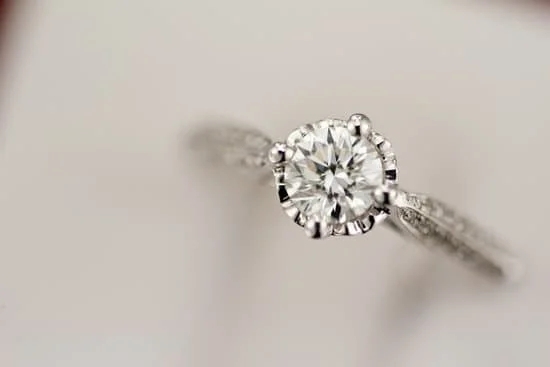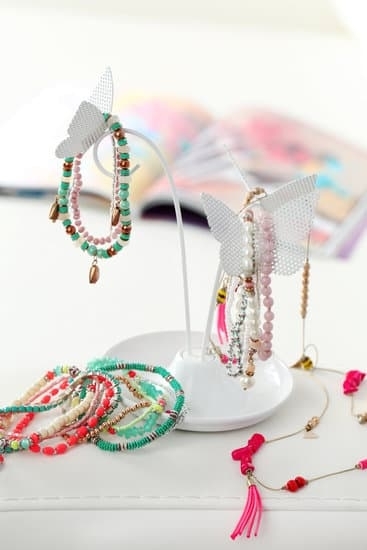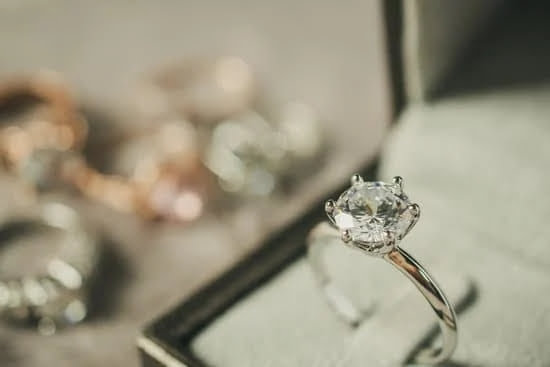Victorian jewelry design of the Victorian era was characterized by intricate craftsmanship and intricate designs. The designs were often inspired by nature, architectural elements, and other everyday items. Victorian design combined metalwork with casting techniques, wood-carved details, and Filigree techniques to create new shapes and patterns.
During this period, designers began to experiment with more precious metals such as gold and silver to create fine pieces of jewelry. Designs included flowers, animals, crowns, hearts, ribbons, geometric shapes and more elaborate items such as pocket watches and cigarette cases.
The late 1800s saw a revolution in jewelry design coined “Art Nouveau”. This style of jewelry incorporated art with nature-inspired designs that had a dreamlike quality to them while still staying within the old-world charm of the times. Popular motifs used during this period include gemstones like Moonstone, Chrysoprase and Turquoise cabochon stones integrated into swirling Art Nouveau filigrees or bold jewelry settings featuring insects, birds or plant life inspired designs.
From 1895 onward jewelers began using platinum for their designs as it gave cleaner lines than yellow gold or sterling silver due to its superior strength which allowed for slimmer mounting and delicate openwork designs without compromising structure or integrity. In addition to the use of platinum , white gold became an alternative in the mid-1800s bringing a range of contemporary elegance within a traditional style setting using diamonds at its centerpiece.
Tastes in gemstones also shifted towards larger gemstones set against minimalistic background in order to draw attention on them (so-called Cluster Style setting)
The aesthetics established by Victorian Era Jewelry Design set up expectations that are still seen today when creating custom made engagement rings or investing in significant pieces of antique jewelry.
Symbolism and Meaning
The Victorian Era was a great time for inherent symbolic meaning and expression to be conveyed through the design of jewelry. The phrases and messaging used in this era’s jewelry designs often communicated deeper feelings of romance, friendship, faith, and spirituality.
These symbols served to communicate deeper meanings without any words being spoken-anyone who encountered them would immediately grasp the underlying messages held within these pieces. Popular phrases such as “Love Unrequited,” “Eternal Light,” or “God Bless You” were expressions commonly seen inscribed on rings, brooches, or charms during this era.
Often times during this period of history, families would pass down heirloom jewelry pieces that held special symbolic significance within them such as family monograms or specially designed crests that symbolized events of great importance in the bearer’s life. During this same time period, lockets were deemed popular pieces of adornment which often held sentimental mementos like hair art or miniature photographs inside them if they were intended to serve sentimental connotations as well apart from their aesthetic beauty.
Moreover, birthstones and other precious stones with special properties used to hold potent symbols related to the power that resided within them. During the Victorian era it was thought that some stones embodied specific powers such as permanence, strength and protection. These elements made stones highly sought after for jewellery making at the time with sapphires when believed by many people to protect against impure thoughts and enhance loyalty as an example of a prized gemstone during this era.
Therefore not only did landowners use precious stones for jewellry pieces but also wore amulets strung with talismans for protection against what was believed at the time to be evil spirits or even illness and disease.
Ultimately Jewelry in the Victorian Era served not just a superficial purpose but functioned as meaningful forms of self-expression while representing powerful spiritual forces that was believed at the time could influence human destiny – making it an important part of daily attire during that era.
Regional Styles
The Victorian era is widely known for its ornate jewelry designs. This includes a variety of regional styles that were developed during this period. One of the key features that distinguishes Victorian jewelry from other eras is the use of elaborate gold and silver setting. Interestingly, these pieces also featured a wide range of gemstone, gem-set and enameled decorations that were both fashionable and aesthetically pleasing.
Jewelry from Great Britain varied greatly in design according to region. In England, there was an emphasis on creating intricate pieces, with heavy metalwork set with vibrant colored stones such as rubies, diamonds and sapphire. Pieces hailed mainly from London, Birmingham and Glasgow tended to show some influence from their city’s fashionable culture at the time while those crafted in small towns had a more rustic beauty with designs often reflecting local nature motifs.
In France and Belgium, elaborate designs reigned supreme as they tended to feature colorful enameling and many different types of gems which symbolized devices or religious emblems. While in Germany styles during this period leaned towards more traditional silhouettes within a linear arrangement using high karat gold charms or brooches strung together with chains or ribbons attached to back plates to create unique designs.
They also favored filigree settings filled with precious stones – glass or crystal beads – or brightly colored seed pearls combined together in intricate patterns and shapes.
Overall it can be seen that the different regions of Europe during the Victorian age all brought something special to the table when it came down to crafting jewelry. Whether it was intricate metal work flowing elegantly into luxurious colored gems or beaded and sequined filigrees delicately arranged around precious stones – each area offered something unique yet all still giving us today a glimpse into this iconic era’s chic lifestyle still admired worldwide today.
Tool and Techniques
The tools and techniques used to craft Victorian jewelry were varied and specific. In general, jewelers of the era worked primarily with gold, silver, and precious gemstones to create jewelry that is as timeless as it is iconic today. From pins, bracelets and earrings to lockets and brooches, artisans during this age used sets of specialized tools in order to create the intricate and eye-catching designs found in Victorian jewelry.
One popular technique utilized by jewelers during the Victorian period was filigree work. Filigree combined small beads of gold or silver woven together with wire to create a delicate lacy pattern on jewelry components like pendants, earrings, and amulets.
This time consuming process required artisans to have immense expertise in soldering wires and engaging in careful filing of each bead – making even a small piece quite labor intensive. Additionally, other popular techniques included diamond setting, engraving (including hollow ware engraving,) enameling (which could be done by hand or via engine turning) as well as a newer development known as etching – which enabled artisans to cut away sections of metal for creating an array of decorative patterns.
The internet has opened up vey unique opportunities for those who wish to explore this pastime further. Numerous sites that sell affordable vintage jewelry are available for both new collectors and for those wanting to purchase traditional pieces crafted from original materials such as sterling silver or gold plated metals.
One can even find tutorials on more common methods such as sawing tiny pieces of metal into desired shapes or stones being set into place using what are known simply referred to as “setting punches”. The best part about collecting essential items from this era is that they represent a slice in time experienced by many great men & women throughout history who had a keen appreciation for the beauty that these pieces possess.
Technological Advances
The Victorian Era, from 1837-1901, was marked by unprecedented change in the jewelry industry. Technological advances that brought forth new ways of manufacturing and creating jewelry designs created a boom in the industry and shaped the style of jewelry during this period.
In terms of manufacturing, there were a few technological advancements that led to a surge in the production of jewelry. The invention of industrial vacuums revolutionized production methods significantly as they allowed metal to be multiplied with an unprecedented speed and perfection. This was complemented with an increase in availability of factory machines which further increased efficiency across the production cycle. In addition, mechanization meant that more artistic designs requiring intricate labor could now be produced at greater volumes.
The second significant technological advance was mass production with interchangeable parts. This allowed jewelers to produce countless variations on pieces due to the ability to change out certain components with ease to achieve different results.
With interchangeable parts, it meant that not only could many copies of pieces be made but unique items could be quickly produced without sacrificing quality or craftsmanship. Finally, electricity also came into play during this period making processes such as electroplating possible for mass production as well as adding another level to custom design possibilities through internal lighting effects stones or other elements within larger pieces.
These advances changed the face of the jewelry industry during the Victorian era allowing for both quantity and quality innovation as well as increased affordability for customers looking for unique designs and pieces not seen before. The combined efforts in technology permanently transformed jewelry design creating timeless pieces perfect for any modern day occasion.
Artisans and Craftsmen
The Victorian Era was a period of artistry and craftsmanship, with artisans and craftsmen devoting their talents to creating beautiful jewelry pieces. Jewelry played an important role in the lives of people during this time, as it was worn to indicate social status, express emotion and commemorate special occasions like engagements and weddings.
Amongst the multitude of skilled artisans producing items from this era was a select group whose primary focus was creating intricate pieces of jewelry. These talented men created crowns symbols of royalty, elaborate necklaces for noblewomen, engagement rings for young lovers, lockets for mourning families; you name it, they created it.
With their technical precision and level of skill, these jewelers crafted items that were not only aesthetically pleasing but also incredibly sophisticated. One of the key characteristics of Victorian era jewelry was its range in complexity.
It could vary from small trinkets that possessed minimal detailing to big statement pieces comprising rich decorations and elaborate embellishments. Artisans made use of gemstones like sapphires and rubies as well as precious metals like gold and silver to bring out the beauty essential element which distinguished these ornamented gems from other types of jewelry produced in the same era.
The importance of artisans and craftsmen who specialized in creating Victorian jewelry lies in their ability to combine traditional techniques with creative interpretation to produce unique yet timeless pieces. Artistic elements such as etching or twining allowed crafters to provide all sorts of modifications to existing products – a method highly valued during this era due to its cost effectiveness.
Similarly, due to the abundance of raw materials that were available then , those with even limited resources had access custom designed jewels – an unprecedented luxury for many. The presence of these innovated jewelers during the period certainly helped redefine how modern fashion looks today-without their contributions we would never have known how vast nineteenth-century cultures were.
Preservation
The Victorian Era was an incredible time of change in Regency London, when the conservative austerities of the Georgian period were replaced with a much more unrestricted and creative approach to culture and fashion. Jewelry was no exception.
The Victorians sought out intricate designs and luxurious materials such as gold, silver, platinum and gemstones. With features such as flowers and curlicues, bows and stars adorning pins and brooches, and long chains with pendants bearing romantic motifs, wearing jewelry during this period signified grace, sophistication and class.
Although it is important to appreciate these pieces for their craftsmanship, cultural significance and beauty, preserving them for generations to come is equally essential. As their materials are both precious and fragile in nature, there are several steps one can take to protect them from damage:
First of all, one should always avoid contact with any kind of abrasive chemicals or cleaners as these could cause permanent harm to the components being used. One should also be aware that jewelry should not be exposed to perspiration or direct sunlight; otherwise this could cause discoloration over time.
Furthermore, as certain metals used in jewelry (such as gold) may be susceptible to scratches or dents if exposed excessively to normal wear-and-tear conditions – it is wise to store them carefully by keeping them inside fabric bags or laying them on soft cloth material such as velvet. This will help preserve their physical beauty while still allowing appreciation of the design elements present.
Finally we must never forget the historical value associated with this type of jewelry; many of these pieces have been passed from one generation to another over centuries because they still stand out as symbols of elegance even today. Therefore it can be seen that preservation not only ensures that pieces remain eye catching but also preserves a little bit of our history for future generations to enjoy.
Gallery
Victorian era jewelry design is highly recognizable for its ornate and intricate designs. Made from precious and semi-precious stones, these pieces were designed to show off wealth and social rank. Popular gemstones such as rubies, sapphires and diamonds were often used in the most impressive jewelry of the time.
Jewels were frequently set in intricate gold filigree settings that were decorated with detailed etching or raised carvings. Brooches often featured diamond halos around one central stone, while earrings would typically use multiple smaller stones surrounded by delicate scrolls or foliage motifs.
Necklaces also served to represent a person’s social standing during this period and could be adorned with a variety of jewels such as opals and garnets. The larger gems were often framed by pave tiny diamonds or clustered together with several smaller stones encircled by a raised border of gold or silver wirework.
Long flowing tassels of pearls often hung from the necklines in stunning contrast to the warm hue of the gold – mirroring the fashionable nature of society at that time.
Another popular style among Victorian era jewelers was lockets – miniature portable collections which held miniatures paintings, secret messages, photographs or even hair from someone who had passed away. These pieces of jewelry served as memorials for those gone but not forgotten bringing heartfelt sentiment with them at all times – no matter how far apart one may have traveled from loved ones, their memories could easily be kept close to the heart through jewelry.
Many locket designs included flowers, initials, animals and birds – highlighting nature’s pure beauty alongside human emotion – each deeply interwoven together through heirloom grade craftsmanship forever connected in history through the lasting beauty of feminine expression in jewelry designs reflective of that time period.

Welcome to my jewelry blog! My name is Sarah and I am the owner of this blog.
I love making jewelry and sharing my creations with others.
So whether you’re someone who loves wearing jewelry yourself or simply enjoys learning about it, be sure to check out my blog for insightful posts on everything related to this exciting topic!





